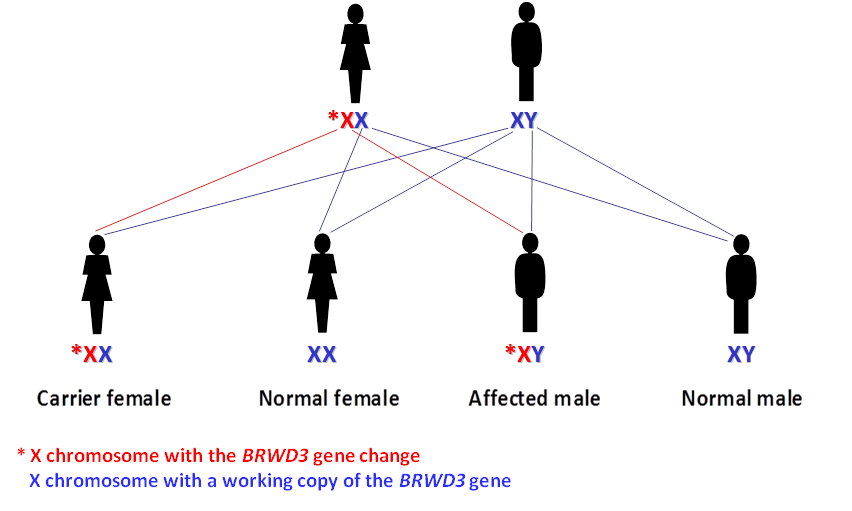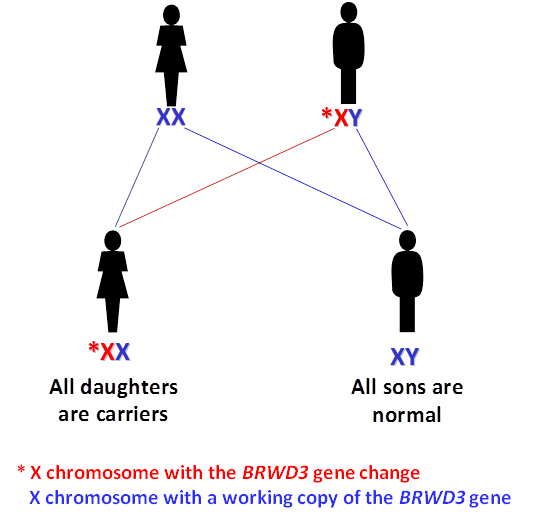General information
What is a BRWD3-related disorder?
BRWD3-related genetic disorder is caused by changes in the BRWD3 gene. The BRWD3 gene is located on the X chromosome and is thought to be important for brain development and function. Changes in the BRWD3 gene have been linked to a large head circumference, generalised learning problems in males and behavioural challenges. Females carrying the mutation typically appear asymptomatic. Only 4 families with changes in the BRWD3 gene are currently reported in the literature around the world, so we are still learning more about this condition.
How is a BRWD3-related disorder inherited?
An individual may have a new (‘de novo’) genetic change in the BRWD3 gene, which is a new genetic change for them, and not inherited from the family.
Alternatively an individual may inherit a BRWD3-related genetic change in an X linked manner. Males inherit an X chromosome from their mother and a Y chromosome from their father. Males who inherit an X chromosome with a BRWD3 gene change will have a BRWD3-related disorder. Females have two X chromosomes: one from their mother and one from their father and each X chromosome has a BRWD3 gene. Females who have a gene change in one of their BRWD3 genes are called carriers.
What are the health implications associated with being a carrier of a BRWD3 gene change?
Female carriers of an inherited BRWD3 gene change do not usually have symptoms.
What are the chances of a female carrier having a child with a BRWD3-related disorder?
When a female carrier is having children, for each pregnancy, there is a 50% chance of passing on the X chromosome with the working BRWD3 gene and a 50% chance of passing on the X chromosome with the BRWD3 gene change (see diagram below).

Female carriers have choices when planning children and these options can be discussed further with a clinical geneticist.
What are the chances of a male with a BRWD3-related disorder having a child with the same disorder?
Males pass on their X chromosome to all their daughters and a Y chromosome to their sons. Males with a BRWD3 related disorder would, if they have children, pass on the X chromosome with the BRWD3 gene change to all of their daughters. This means all their daughters will be carriers and at risk of having sons of their own with a BRWD3-related disorder, or of being affected. As a male with a BRWD3 disorder passes on his Y chromosome to all his sons they will not be carriers or have a BRWD3-related disorder.

